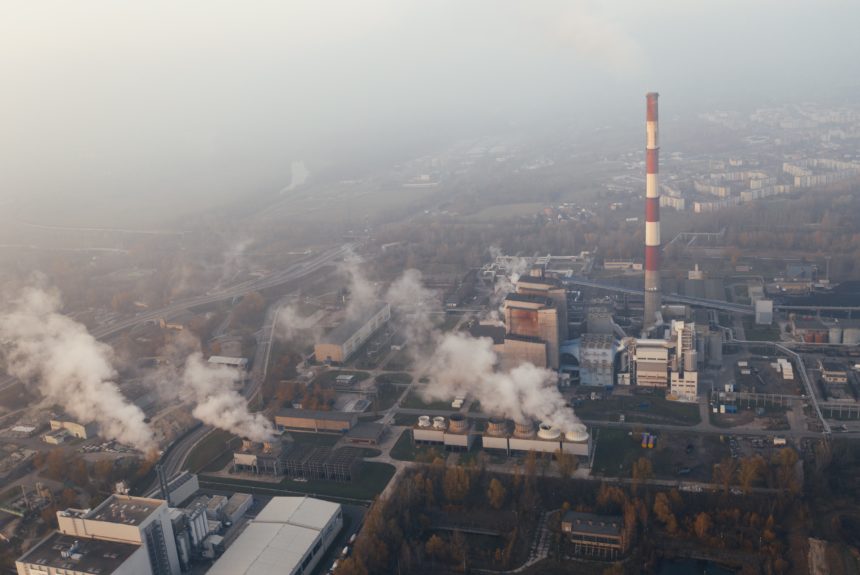Methane is a potent greenhouse gas, over 30 times more effective at trapping heat from the Earth than carbon dioxide. Measured over a 20-year period, methane’s global warming potential skyrockets to approximately 85 times that of carbon dioxide (CO2), according to the Environmental Defense Fund (EDF).
At the UN Climate Change Conference (COP26) last November in Glasgow, world leaders headed by the U.S. and the EU convened to rapidly reduce emissions of this heat-trapping gas, believed to be responsible for approximately half of the 1.0-degree Celsius net rise in global average temperature since the pre-industrial era. Motivated by their commitment to keeping temperate increases to 1.5 degrees Celcius, more than 100 countries, including around half of the world’s most prolific anthropogenic methane emitters, signed the Global Methane Pledge, an initiative to slash global methane emissions by at least 30% by the end of the decade.
>>>READ: This Tree-Tracking Startup Is the Most Innovative of Its Kind
The agreement is an admirable step in the fight against climate change, but will it be enough to coerce governments into delivering on their commitments? Key to helping global actors curtail emissions is having the actual data in hand to do so. That’s where Carbon Mapper comes in, the new methane and CO2 monitoring and mitigation organization aimed at helping governments and companies decarbonize their supply chains.
Traditional greenhouse gas accounting systems often under-report emissions. Legacy systems like the Environmental Protection Agency’s methane inventory estimate and other longstanding self-reporting programs inherent to the U.S. oil and gas sector are notoriously unreliable, undercounting emissions by as much as 60%, as reported in the journal Science. The industry-wide data deficit equates to about $2 billion in annual losses and over five million metric tons of “invisible” methane in the atmosphere, the report estimates.
The systemic failure of current inventory methods to accurately report emissions levels points to “gaps in the emerging global ecosystem of methane and CO2 monitoring systems,” according to Riley Duren, chief executive officer of Carbon Mapper.
Duren’s nonprofit seeks to transform the $20+ billion global leak detection and repair market by “delivering data that’s timely, actionable and accessible for science-based decision making,” leaning on federal agencies like NASA for state-of-the-art greenhouse gas detecting technology and public-private partners like the University of Arizona and Bloomberg Philanthropies for research and financial support.
In collaboration with NASA’s Jet Propulsion Laboratory in southern California, Carbon Mapper is locating and tracking so-called greenhouse gas “super-emitters,” (i.e. rare but outsize emissions sources that contribute significantly to emissions counts). According to ongoing airborne studies from the Pasadena-based nonprofit, high-emitting methane sources can contribute upwards of 50% towards a region’s total emissions. These aberrant sources are highly intermittent; in the oil and gas industry, for example, half of the high emitting sources are active less than 25% of the time.
Lower-producing oil and gas wells often fall under this category, says Duren. Because most are too small to meet EPA production size requirements, they are often excluded from the agency’s counts altogether. Unfortunately, there are hundreds of thousands of these marginal wells, and they’re all very leaky, says David Lyon, a senior scientist at EDF.
In order to meet the goals of the Global Methane Pledge, governments need to identify the sources of those leaks and how much, exactly, they are leaking. Using aerial surveys and infrared imaging spectrometers, in addition to advanced remote sensing technologies like stationary lasers and lidar sensing, Carbon Mapper can pinpoint, quantify, and track methane emissions at the scale of individual facilities, ensuring anomalously high point sources missed by traditional tracking approaches can be detected and providing key data to meet countries’ global climate commitments.
Nathalie Voit is a freelance content creator and a graduate of the University of Florida. She is an alumni of The Heritage Foundation’s Young Leaders Program.
The views and opinions expressed are those of the author’s and do not necessarily reflect the official policy or position of C3.
